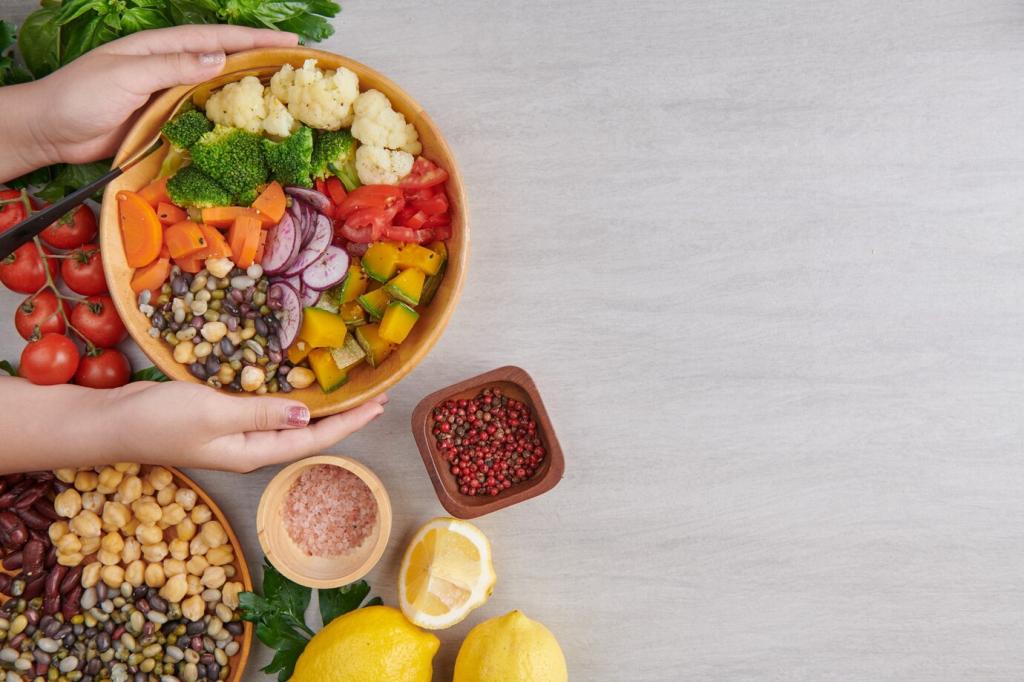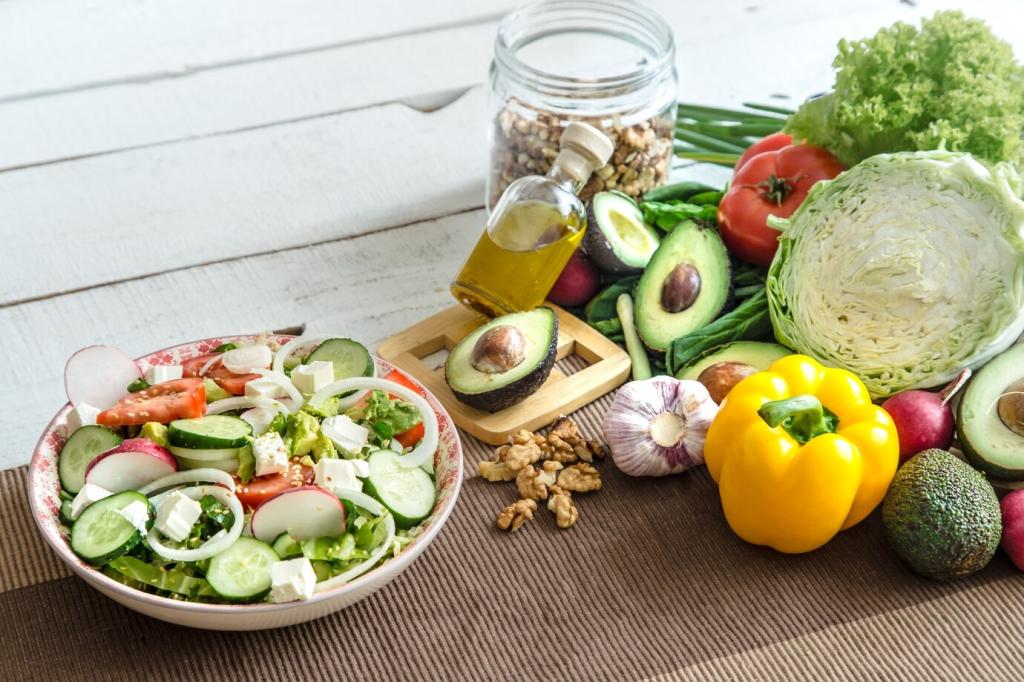Mindful Cooking: A Path to Mental Wellness
Mindful cooking is the art of being fully present and engaged with the process of preparing food. This practice transforms the kitchen from a place of routine chore into a sanctuary for self-care, reflection, and emotional nourishment. By fostering awareness in each step, from ingredient selection to the first bite, mindful cooking cultivates a sense of calm and connection. As more people seek holistic approaches to well-being, mindful cooking stands out as a powerful tool to support mental wellness, encourage positive habits, and bring joy back into everyday meals.
Understanding Mindful Cooking
The Science Behind Mindful Cooking
Research has demonstrated significant links between mindfulness practices and mental wellness, emphasizing reductions in stress, anxiety, and depressive symptoms. In the context of cooking, mindfulness can activate the parasympathetic nervous system, reducing cortisol levels and fostering relaxation. Scientists explain that focusing the mind on sensory experiences, such as the aroma of herbs or the texture of dough, can reinforce neural pathways associated with calmness and presence. These scientific insights underline why mindful cooking is considered more than a feel-good exercise—it’s a tangible method for enhancing mental health over time. By intentionally engaging with every aspect of cooking, you not only create nourishing meals but also cultivate a healthier mind.
Everyday Rituals in the Kitchen
Turning cooking into a daily mindful ritual can be transformative. The repetition of chopping, stirring, and seasoning can serve as anchors to the present moment. When you approach these tasks with intention, each gesture becomes a small meditation, a break from the distractions of digital devices and outside noise. Over time, these rituals help set the tone for the day or evening, providing stability and a grounding routine that supports overall emotional balance. This structure has been shown to improve resilience against daily stressors, making food preparation a foundational act of self-care.
Cultivating Presence Through Preparation
Preparation is the heart of the mindful cooking experience. Washing fresh vegetables, measuring spices, and feeling the textures of ingredients present opportunities to slow down and tune in to your senses. Instead of rushing, allow yourself to fully experience each step, appreciating the transformation of raw ingredients into nourishing dishes. This sense of presence carries over into other areas of life, teaching patience, attention, and compassion. As mindfulness grows in the kitchen, it creates a ripple effect, gradually infusing your daily mindset with a steadier, more accepting outlook.
Emotional Benefits of Mindful Cooking
Cooking in a mindful manner acts as a form of active meditation, offering a much-needed escape from daily worries. By paying close attention to chopping, stirring, and savoring aromas, the mind is encouraged to shed intrusive thoughts and find respite in the moment. The repetitive motions and tactile sensations associated with cooking can lower stress hormones and cultivate a sense of tranquility. For many, this mindful immersion becomes a form of self-soothing that is both productive and deeply regenerative, providing a reliable source of relaxation at the end of a busy day.

Connecting Senses for Deeper Awareness
Focusing your awareness on taste and smell during cooking unlocks layers of memory, anticipation, and pleasure. Aromatic spices, simmering sauces, and freshly cut herbs create a sensory tapestry that anchors the mind in the present. As you consciously notice each flavor and fragrance, you can more easily detach from unresolved worries and surrender to the joy of creation. This enhancement of pleasure directly supports emotional regulation and contentment, transforming the way you engage with both food and life’s simple delights.
Texture offers a tactile pathway to mindfulness in the kitchen, whether you’re kneading dough, rinsing greens, or slicing fruit. The sensation of resistance, softness, or crispness draws attention to the present, making each moment feel immediate and vivid. This connection to physical sensation grounds you in reality and helps silence the mind’s chatter. Exploring texture invites curiosity and a playful spirit, allowing you to rediscover childlike wonder in everyday movements. Such embodied mindfulness nurtures both calmness and gratitude, linking the act of cooking with deeper mental clarity.
Visual awareness is a core component of mindful cooking, as the colors, shapes, and arrangements of ingredients can delight and focus the mind. Watching vegetables transform in boiling water or admiring the golden-brown crust on a baked loaf keeps attention rooted in the here and now. Mindfully appreciating the visual beauty in your kitchen fosters a sense of anticipation and appreciation, enriching your connection with the meal. Allowing yourself to soak in these visual details can also inspire creativity and joy, making the kitchen a true haven for relaxation and self-discovery.

Cooking as a Form of Meditation
Breathwork While Cooking
Conscious breathing can seamlessly integrate into your cooking practice, stabilizing your energy and promoting deep relaxation. Taking slow, measured breaths as you cook helps anchor you in the moment, minimizing anxiety and tension. This focus on breath is particularly effective during repetitive tasks, allowing thoughts to settle naturally. As you pair each inhale and exhale with motions like chopping or stirring, the kitchen becomes a personal meditation space. Over time, breathwork in the kitchen nurtures resilience and emotional steadiness, equipping you to handle life’s challenges with greater calm.
Motion and Stillness
Cooking presents a unique blend of movement and moments of calm, each providing its own opportunities for mindfulness. From stirring a simmering pot to standing quietly as bread rises, you can practice being fully present in both action and pause. Pausing to notice your heart rate, the play of light on a countertop, or the warmth of the oven infuses each stage with heightened awareness. This oscillation between motion and stillness teaches flexibility in the mind and body, making it easier to find balance and serenity even amidst chaos.
Intention Setting in the Kitchen
Setting an intention before you cook infuses your actions with purpose, shaping the experience beyond basic nourishment. Whether your intention is gratitude, self-care, or simply enjoyment, articulating this focus steers your attention and attitude. As you proceed, this grounding intention acts like a lighthouse, guiding decisions and responses with mindfulness. Revisiting your intention throughout the cooking process can realign your focus, deepening your engagement with the practice. Over time, this ritual elevates not just your meals, but your broader approach to living.
Preparing for Mindful Eating
How you prepare food sets the tone for eating it mindfully. Choosing to cook with patience, attentiveness, and appreciation transitions you naturally into a similar mindset when you sit down to eat. This preparation process primes your senses and thoughts for a slower, more considered experience, reducing the urge to rush or multitask during meals. Bringing this same spirit of non-judgmental observation to the table enhances digestion, enjoyment, and satisfaction. By starting with mindful cooking, you set yourself up for more balanced, rewarding eating habits overall.
Savoring the First Bite
That very first bite is an opportunity to fully engage with your senses, reflecting the mindfulness you practiced in the kitchen. When you notice texture, temperature, and flavor as they unfold, you maximize pleasure and bodily satisfaction. Savoring this initial moment also creates a pause, inviting gratitude for the effort invested in the meal and the nourishment at hand. Each subsequent bite then serves as a continuation of this mindful attention, allowing for greater body awareness and a deeper sense of enjoyment. This heightened presence turns even simple meals into memorable experiences.
Listening to Your Body's Cues
Mindful cooking naturally leads to improved attunement to your body’s needs and signals. When you prepare and eat food consciously, you can better discern hunger, fullness, and satisfaction cues, helping to prevent overeating or mindless snacking. This attentive relationship with your body fosters a respectful, compassionate attitude toward eating. As trust builds, eating becomes less about restrictions and more about genuine self-care. This shift supports not only physical health, but also emotional and mental wellness, as you learn to honor and nourish yourself from within.
Overcoming Barriers to Mindful Cooking
A common misconception is that mindfulness in cooking requires hours of uninterrupted time. In reality, even brief moments of attention during ingredient selection or the first few minutes of cooking can bring about meaningful shifts in awareness. Setting aside ten to fifteen minutes for a simple, mindful food preparation can fit seamlessly into most routines. The key is quality of attention, not quantity of time. As this habit grows, it often expands naturally, with individuals carving out more space for mindful practices as they experience the calming benefits and improved mood.
For some, cooking is associated with chore, pressure, or past failures. Adopting a mindful approach offers the chance to reframe these experiences, turning them into opportunities for growth and self-compassion. Starting with simple recipes and forgiving mistakes can ease performance anxiety, allowing enjoyment and confidence to flourish. Each cooking session becomes an act of letting go and exploration, helping to heal old wounds related to food or self-worth. Over time, these positive experiences reshape attitudes, making the kitchen a friendlier and more inviting space.
Mindful cooking need not be expensive or complicated. Using whatever ingredients and tools are on hand, anyone can create moments of presence and appreciation in the kitchen. The focus is on the process, not perfection or extravagance. Mindfulness can be as simple as noticing the movement of water as you wash rice, or savoring the aroma released from a chopped onion. By removing expectations and embracing resourcefulness, mindful cooking becomes attainable for everyone, regardless of skill level or circumstance.
Mindful Cooking for Families and Community
Engaging Children in Mindful Preparation
Inviting children into the mindful cooking process introduces them to awareness, creativity, and collaboration from an early age. By involving kids, you help them develop sensory vocabulary, patience, and an understanding of where their food comes from. Simple activities like washing vegetables or stirring batter can be transformed into playful lessons in mindfulness, teaching life skills that extend far beyond the kitchen. These shared moments foster trust and communication, strengthening family bonds and enriching childhood with positive memories centered around food and care.
Shared Rituals for Families
Establishing family cooking rituals, such as preparing a favorite meal together each week, creates anchors of togetherness and stability amidst busy schedules. These traditions promote mindfulness by encouraging every member to participate, observe, and appreciate the process. Shared laughter, conversation, and teamwork enhance emotional closeness, while the act of co-creating nourishes a collective sense of accomplishment. These rituals also help model healthy habits for younger generations, ensuring that mindfulness and self-care remain integral values within the family dynamic.
Building Community Through Food
Mindful cooking has the power to unite neighbors, friends, and broader communities. Group cooking sessions, potlucks, or cooking classes can serve as avenues for connection and support, fostering empathy and cultural exchange. Preparing and sharing food with intention encourages dialogue, breaks down barriers, and strengthens mutual understanding. As community members collaborate in the kitchen, they gain both practical skills and emotional rewards, reinforcing a sense of shared purpose. This collective mindfulness extends far beyond the table, enriching community life with compassion, resilience, and belonging.
